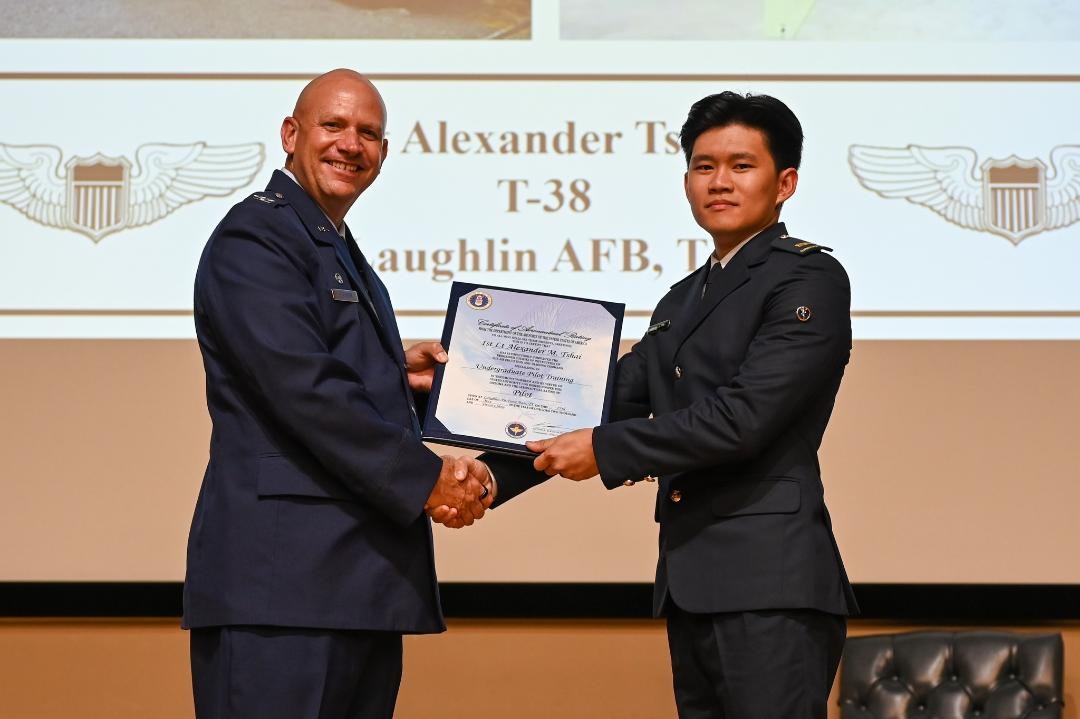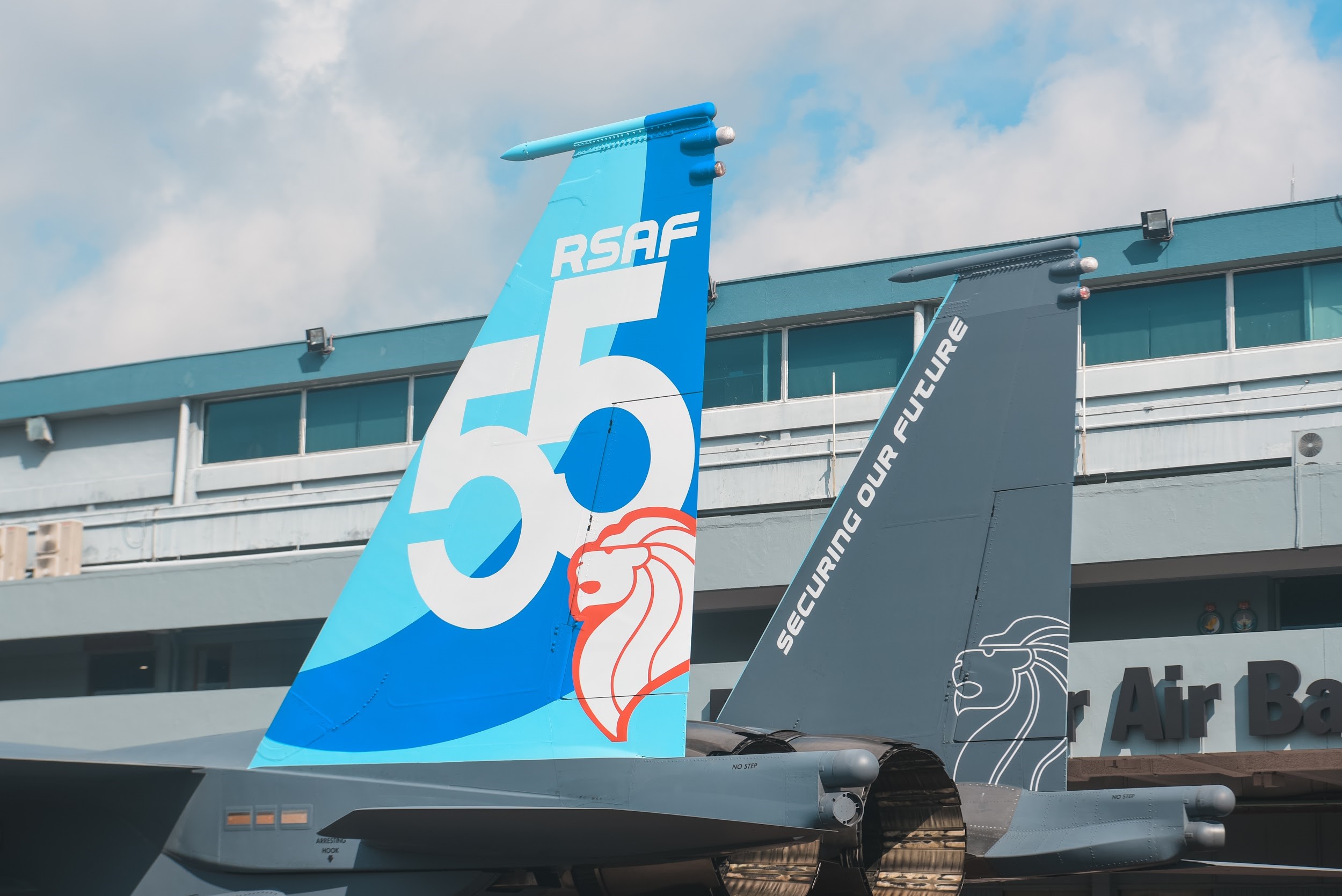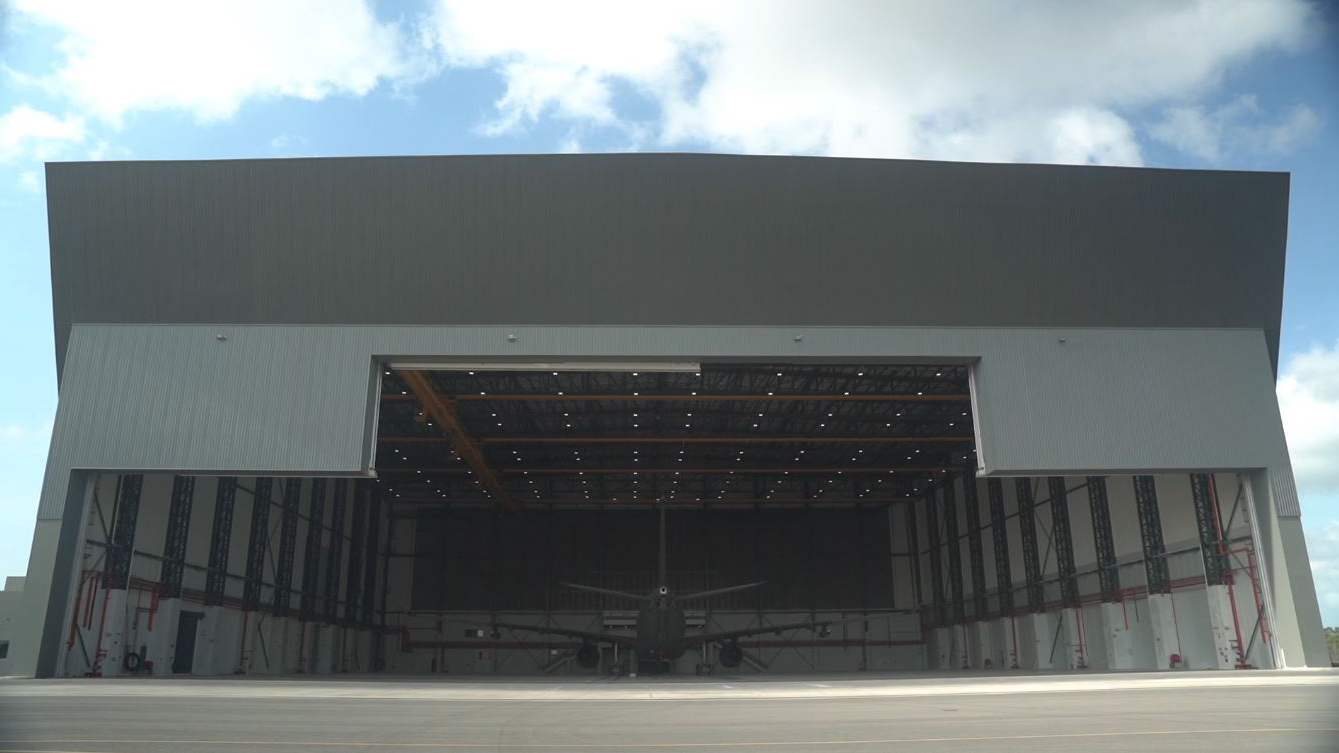 "> The A330 Multi-Role Tanker Transport Hangar.
"> The A330 Multi-Role Tanker Transport Hangar.
 5 Interesting Facts About Our New A330 MRTT Hangar!
5 Interesting Facts About Our New A330 MRTT Hangar!
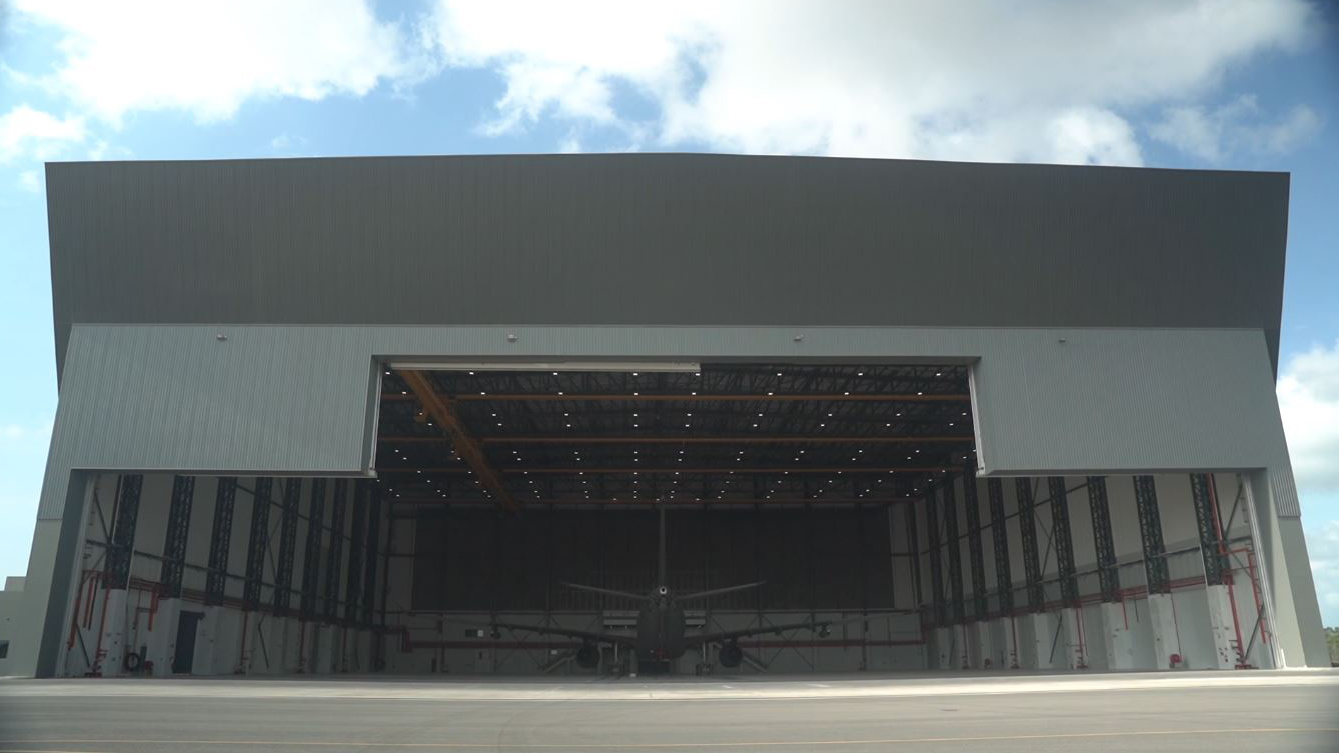
 "> The A330 Multi-Role Tanker Transport Hangar.
"> The A330 Multi-Role Tanker Transport Hangar. As part of the Whole-of-Nation response to tackle climate change, the RSAF has worked with the Defence Science and Technology Agency (DSTA) to build an environmentally-friendly and sustainable hangar for our A330 Multi-Role Tanker Transport (MRTT)! The new hangar was officially announced by Minister for Defence, Dr Ng Eng Hen, during his Committee of Supply speech earlier this month.
Check out five interesting facts of our new A330 MRTT Hangar, which has won the Greenmark Platinum award from Building and Construction Authority!

The hangar utilises energy-efficient LED lighting.
1. The hangar is the SAF’s first Net Positive Energy Building.
The MRTT hangar is the SAF’s first building to be able to generate more energy than it consumes! This is possible because of several features of the hangar, such as solar panels which generates energy for the hangar’s consumption, as well as the complex’s LED lighting and energy-efficient air conditioning which conserves more electricity. Overall, the hangar will be able to generate 30% more electricity it utilises!
2. The hangar’s solar panels are able to produce enough electricity to power 273 four-room HDB flats!
The solar panels are able to produce around 1,225 MWh of electricity per year, equivalent to the electricity consumption of 273 four-room HDB flats! The additional energy generated can then be channelled to supplement other energy demands within Changi Air Base (East), achieving great cost and energy savings.
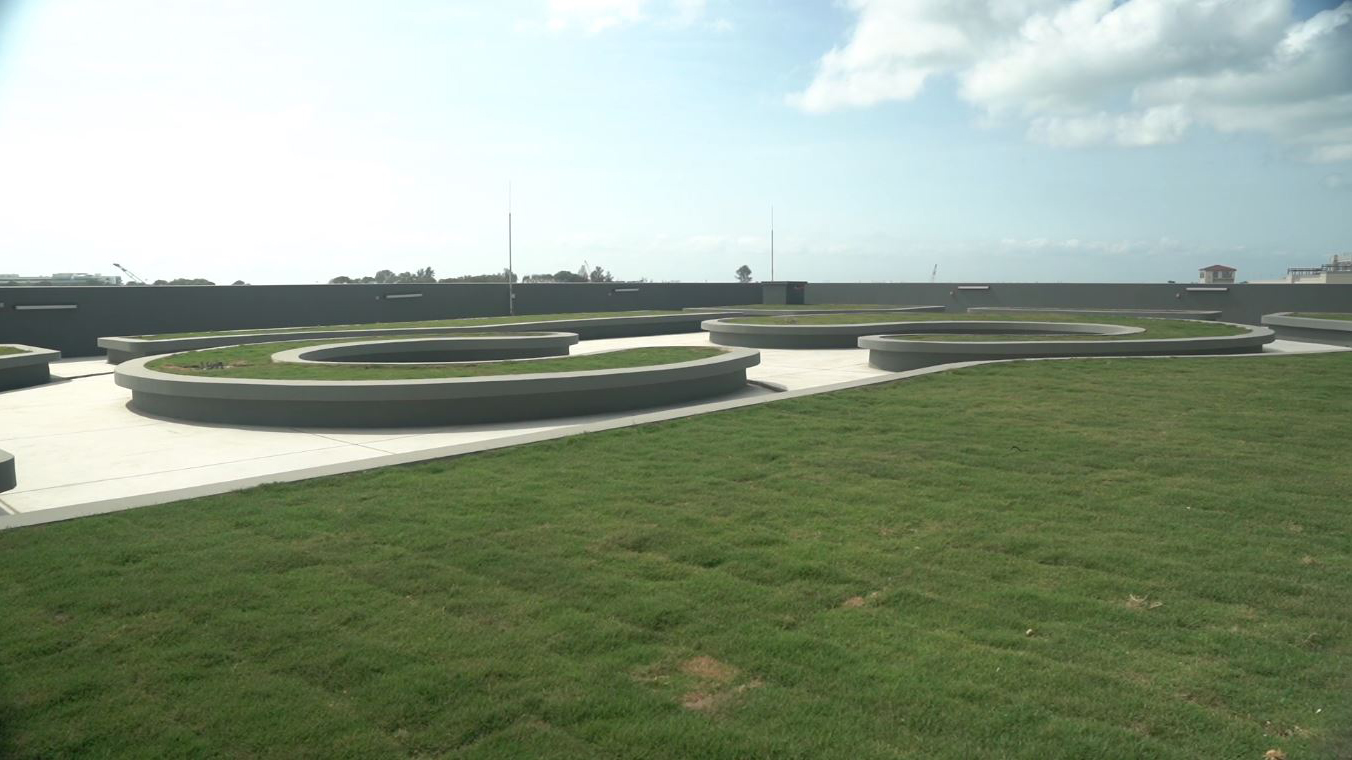
The MRTT hangar is equipped with a green roof which acts as an insulation layer to keep the hangar cool.
3. Our airmen will be cool in the hangar – literally!
You’ll find that the hangar’s roof is not an ordinary one! Besides serving as a rest and recreational area, the green roof also acts as an insulation layer to reduce solar heat gain in the building. The hangar space is designed to optimise airflow, with large-span louvres for natural ventilation, while a panelled fabric door and high-volume low-speed fans keep our airmen cool and comfortable as they work.
4. The hangar will be able to cut water consumption equivalent to 28 four-room HDB flats!
The hangar is equipped with a rainwater harvesting system, which is able to recycle rainwater for non-potable uses such as general washing, auto-irrigation of the hangar’s green roof, as well as toilet flushing. Together with the complex’s water efficient fittings, the hangar will be able to save 5,460 cubic meters of water per year.
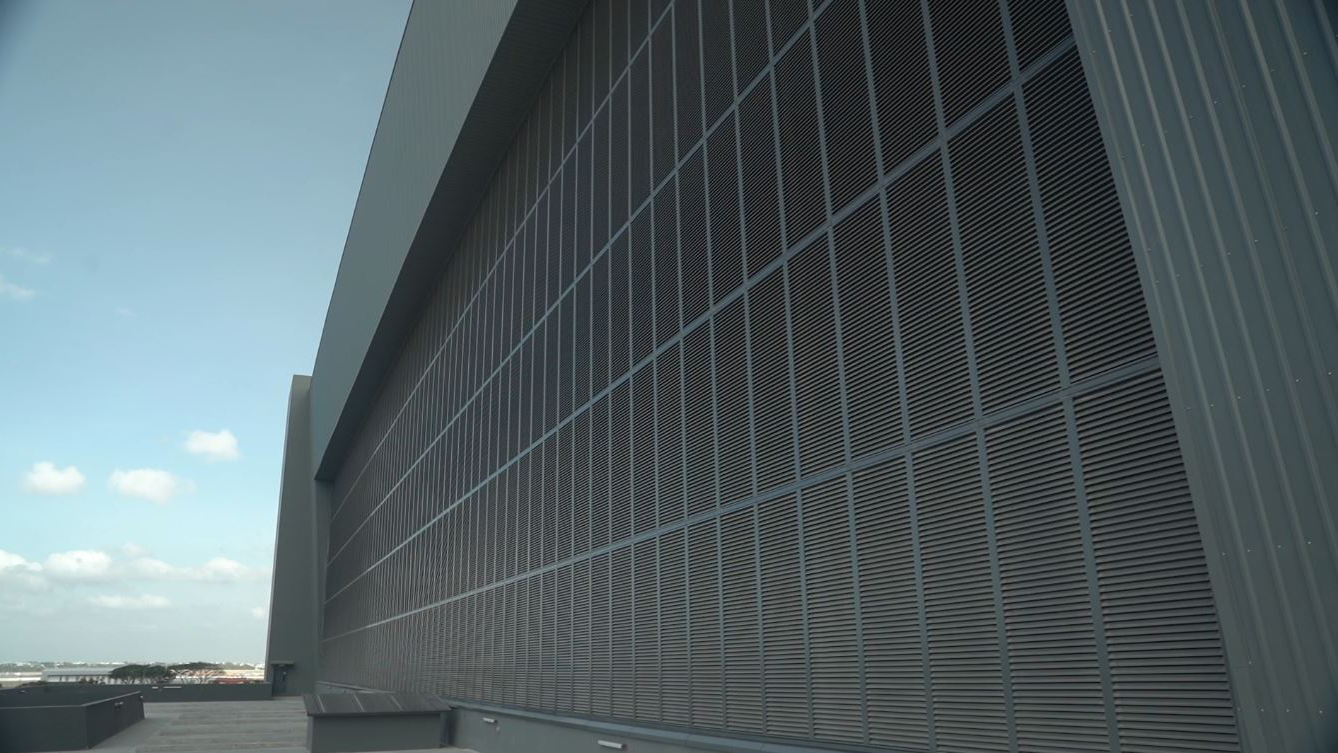
Large-span louvres allow for natural ventilation.
5. The use of technology in the design of the hangar allows for more efficient development and building of the complex.
Technologies such as Building Information Modelling (BIM) and Virtual Reality (VR) were used in the construction of the hangar. BIM was employed to create a detailed digital model of the hangar, so as to minimise actual rework and wastage during the construction of the complex. VR was also utilised to provide an immersive and realistic experience for users to collect more accurate feedback on workflows and operations.
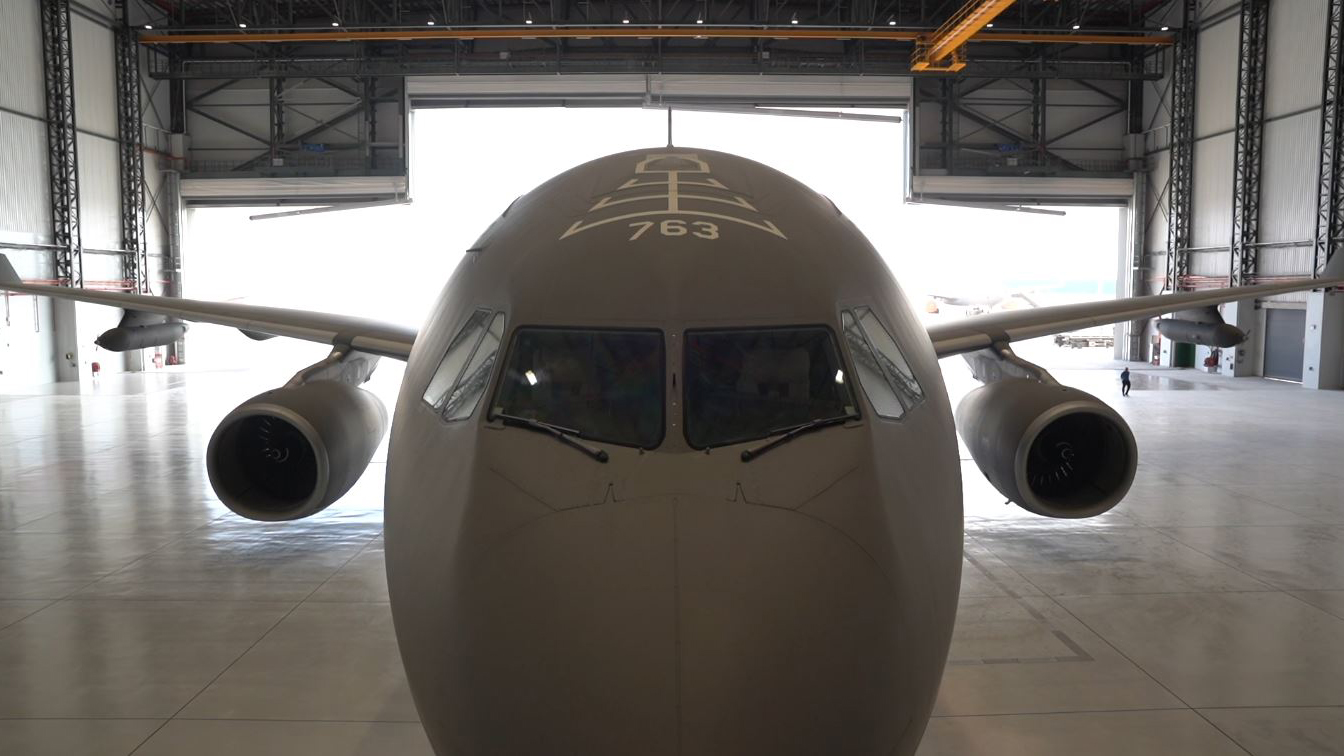
The A330 MRTT in the hangar.


